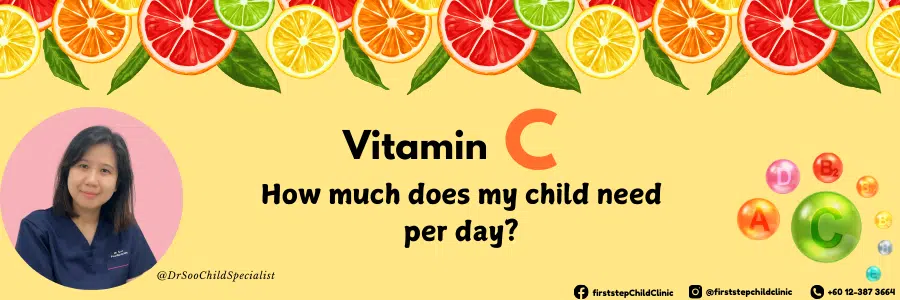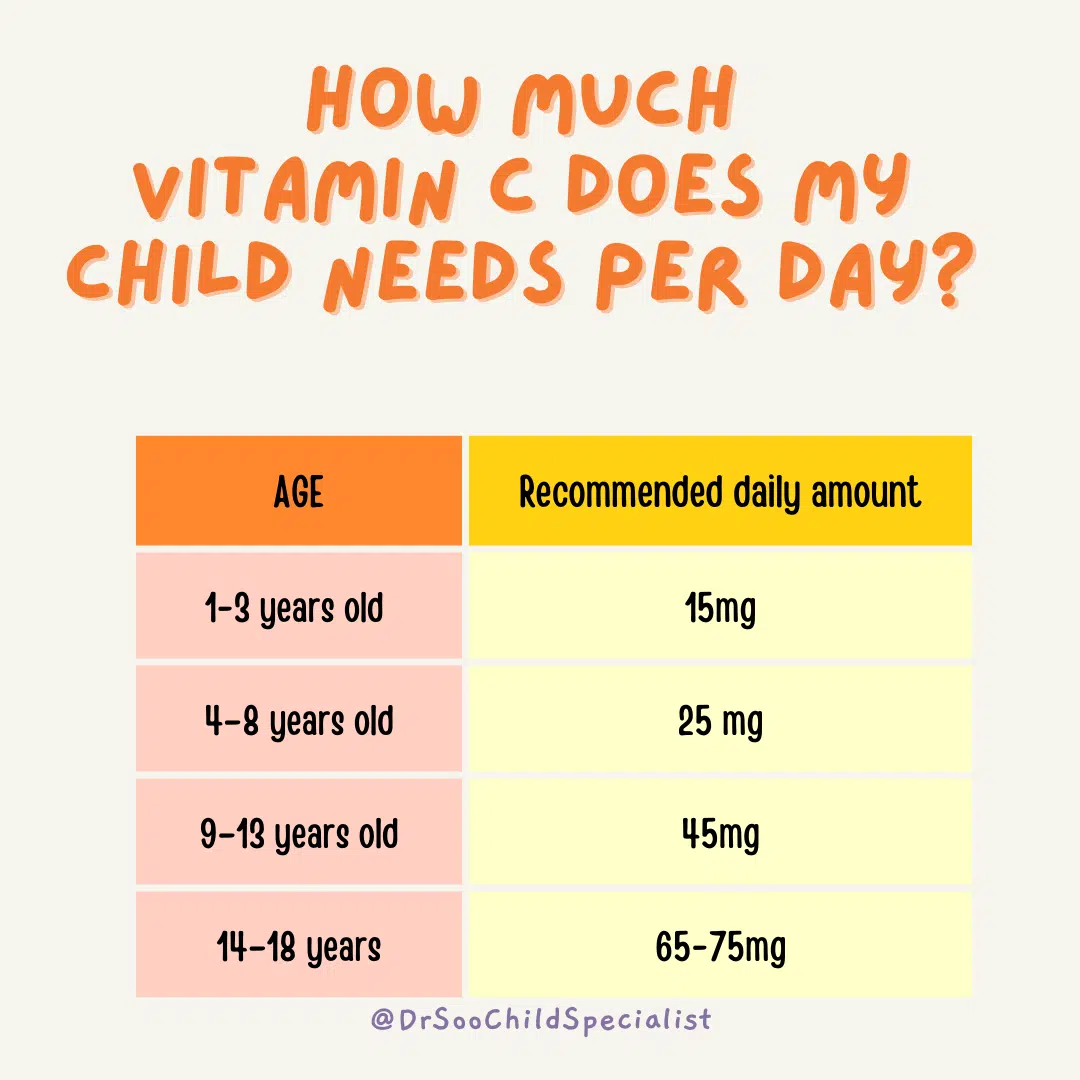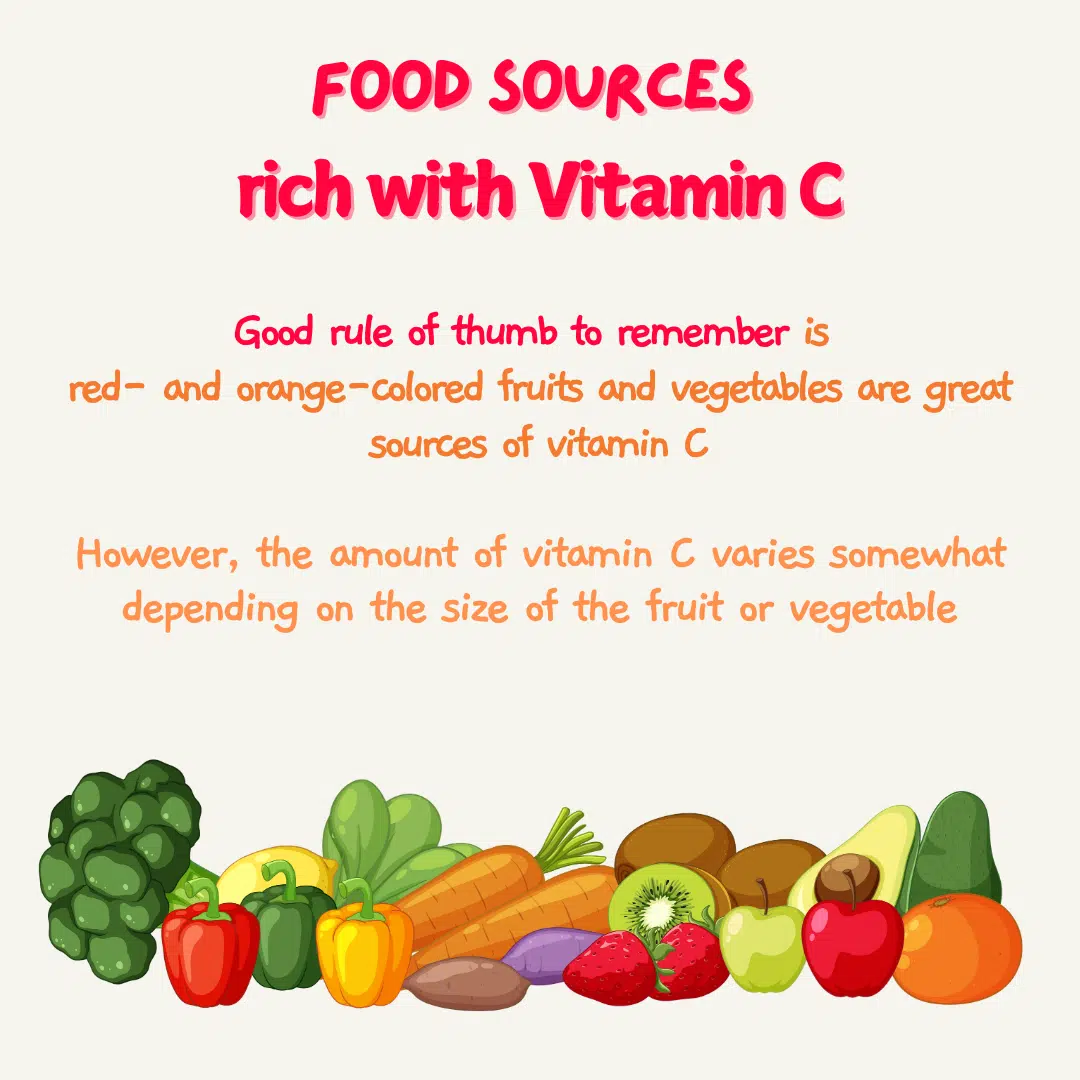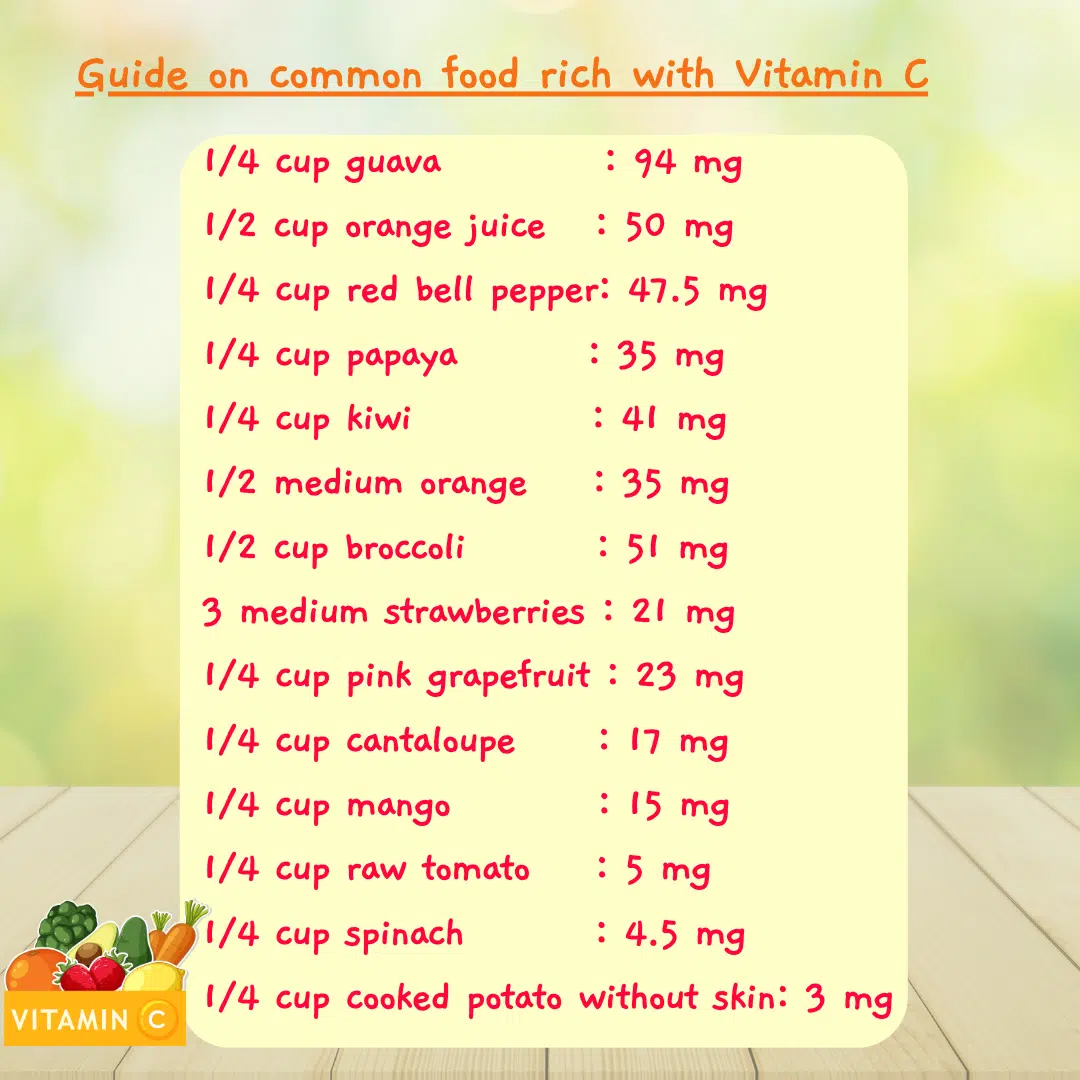
Vitamin C for your child
Dr Soo’s tips: How much Vitamin C does my child need per day?
Vitamin C is an essential nutrient that supports your child’s overall health and development. It boosts their immune system, promotes healthy skin, and aids in iron absorption. But how much is enough? Knowing the right amount of Vitamin C your child needs can help them get the proper nutrition to thrive. Let’s dive into age-specific recommendations and some great sources of Vitamin C to include in your child’s diet!
What is Vitamin C?
Vitamin C, also known as ascorbic acid is a water-soluble vitamin essential for various bodily functions. Since the body cannot produce Vitamin C, it must be obtained through diet, primarily from fruits and vegetables.
6 benefits of Vitamin C
- Boost immunity:
– Help the immune system fight colds, flu, and other infections.
– Speeds up recovery time when your child is sick. - Wound healing and promotes healthy skin:
– Essential for producing collagen, keeping skin healthy, and supporting faster wound healing.
– Helps maintain strong gums and prevent gum disease - Support growth and development
– Contributes to the development of bones, cartilage, and connective tissue.
– Plays a role in maintaining strong teeth. - Enhanced Iron Absorption
– Improves the absorption of non-heme iron (found in plant-based foods), preventing iron-deficiency anemia. - Antioxidant
– Protect cells from damage caused by free radicals. reducing inflammation. - Improved cognitive function
– Supports brain health by helping synthesize neurotransmitters vital for learning and memory.
By including Vitamin C-rich foods like oranges, strawberries, kiwis, and bell peppers in your child’s diet, you can help them enjoy these incredible benefits and support their overall health!
How Much Vitamin C Does My Child Need Per Day?
The recommended daily intake of Vitamin C for children varies by age and ensures they get the right amount for healthy growth and development. Here’s a quick guide based on age groups:
For children who are fussy eaters or have specific dietary restrictions, a pediatrician may recommend a Vitamin C supplement to fill the gap. However, it’s best to focus on natural sources like fruits and vegetables to meet their daily needs. Foods like oranges, strawberries, bell peppers, and broccoli are excellent choices.
Always consult your pediatrician before starting any supplements to ensure your child gets the right amount of Vitamin C safely.
Food sources that rich in Vitamin C
Incorporating Vitamin C-rich foods into your child’s diet is essential for their growth and immunity. Here are some excellent sources to consider:
Fruits
- Oranges and Orange Juice – A classic and kid-friendly option.
- Strawberries – Sweet and packed with Vitamin C.
- Kiwis – Small but mighty in nutrients.
- Papayas – Great for digestion and high in Vitamin C.
- Guavas – One of the richest natural sources.
- Mangoes – A tropical favorite that kids love.
- Pineapples – Sweet and tangy, great in smoothies.
Vegetables
- Red Bell Peppers – Contain more Vitamin C than oranges!
- Broccoli – A nutritious option that’s easy to prepare.
- Brussels Sprouts – Great roasted or steamed.
- Tomatoes – Versatile and easy to include in meals.
- Spinach – A leafy green that’s also rich in iron.
- Cauliflower – A crunchy snack or side dish.
Other Sources
- Potatoes (especially new potatoes): Provide a small amount of Vitamin C.
- Fortified Juices and Cereals: Great for picky eaters who might not eat fruits and vegetables.
Quick Tips
- Serve raw or lightly cooked vegetables to preserve their Vitamin C content.
- Include a variety of these foods in meals and snacks to keep things interesting and colorful.
What happens if your child takes too much vitamin C?
Although Vitamin C is water-soluble (meaning any excess is eliminated through urine) and has an overall low toxicity risk in healthy persons, consuming too much of it can cause some adverse gastrointestinal side effects, including cramps, nausea, and diarrhea.
Short-Term Side Effects
- Stomach Upset
- Nausea, vomiting, or abdominal pain.
- Diarrhea
- Common with excessive intake the digestive system reacts to the overload.
- Bloating and Gas
- Due to the fermentation of unabsorbed Vitamin C in the gut.
Long-Term Risks (Rare)
- Kidney Stones
- High levels of Vitamin C can increase oxalate levels in urine, potentially forming stones.
- Iron Overload
- In rare cases, excessive Vitamin C may enhance iron absorption, which can be harmful to individuals with conditions like hemochromatosis.
Prevention Tips
- Focus on natural food sources for Vitamin C rather than supplements unless prescribed by a doctor.
- Avoid high-dose Vitamin C supplements for children unless directed by a healthcare professional.
If you suspect your child has consumed too much Vitamin C and experiences symptoms, consult a healthcare provider promptly.
The bottom line
Vitamin C is a vital nutrient that supports your child’s growth, immunity, and overall well-being. By including a variety of fruits and vegetables in their diet, you can easily meet their daily Vitamin C needs. While this nutrient is essential, moderation is key—excessive intake, especially from supplements, can lead to side effects.
For a balanced approach, focus on natural food sources and consult your pediatrician if you’re considering supplements. By ensuring your child gets the right amount of Vitamin C, you’re helping them build a strong foundation for a healthy and active life!



